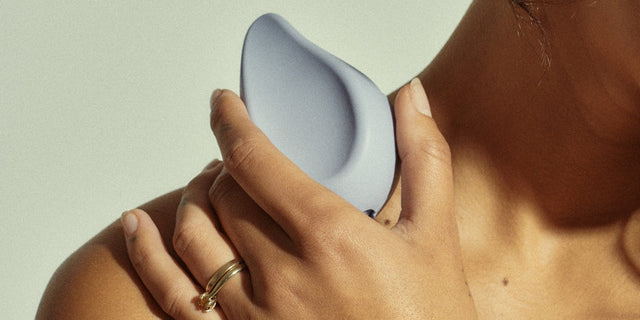World Continence Week: Dr Jana Pittman breaks 4 myths about incontinence
Incontinence is a reality for many people, so we shouldn’t be afraid to talk about it.
For this year’s World Continence Week, we’ve asked women’s health specialist Dr Jana Pittman to dive into the latest research around incontinence and answer some of the most commonly asked questions, from how to manage incontinence to what is incontinence underwear.
Let’s get into it.
Myth #1: Incontinence is a normal part of ageing
Dr Jana Pittman: “The long and short of this is no, it’s not normal, but it is far more common as we age and our hormonal profile changes.
A recent systematic and meta-analysis review (meaning: a very robust study
in medicine) studied 518,465 women aged between 55 and 106. It reported that 37.1% of these women experienced incontinence (1).
Interestingly the study showed that the most important factors that increased a woman’s risk of incontinence were:
- Age - menopause causes a drop in estrogen and collagen
- Obesity - excess weight puts pressure on the bladder
- Poorly controlled diabetes - hyperglycemia causes increased bladder fullness due to thirst, overactivity, and nerve damage
- High blood pressure - hypertension due to medication or reduced mobility can cause a weaker pelvic floor
- Lower education - lack of education is also linked to higher levels of incontinence, which is where this article comes in!
The best thing to do is to talk, share information and get ourselves and loved ones to see a GP, gynaecologist or health physiotherapist to figure out the cause and management options.”
Myth #2: You’ll have to have surgery to fix your incontinence
Dr Jana Pittman: “For some, surgery may be the best option, but for many, it’s not needed. It’s also not the first thing to try.”
First, let’s explain what incontinence is.
Dr Jana Pittman: “There are several causes of incontinence. The most common is a mix of stress and urge, but some women have just an urge (an intense desire to urinate even if she has just voided) or stress (when sneezing or coughing causes leakage).
Finding out the cause is important because some cases respond to bladder training, like doing Kegels. Others respond well to medicine that reduces overactivity, some reduce it with a pessary, a device that holds up the bladder. As a final option, some people may need surgery.
Another common misconception is that there’s nothing you can do about incontinence except wear a pad or a nappy. Again, nope! I still highly recommend a trip to the doctor to work out the cause, but in the meantime, there are lots we can do, including
- Focus on a healthy diet
- Manage your weight with some walking and exercise
- Stop smoking
- Do pelvic floor exercises
- Practice good toilet habits. Don’t strain when you need to open your bowels, don’t let your bladder fill too much, and drink regularly but reduce caffeine and alcohol, particularly after 5pm.
Sometimes an occasional leak will slip out if you laugh hard or have pushed yourself in the gym. With our fave Modibodi undies, who cares!”
Myth #3: Your doctor can’t help you with incontinence
Dr Jana Pittman: “Ahh, as per above, this is 100% incorrect! If your local doctor doesn’t have much knowledge of treatments, they will refer you to a gynaecologist who does. Even then, your gynaecologist might send you for ‘urodynamic studies’, which will look at how and why your bladder leaks.
Sometimes it’s obvious, but other times these tests can help determine the best treatment. You can also be your own advocate and start seeing a women’s health physio immediately. They will help you learn to do your pelvic floor work correctly.”
Myth #4: Running for the bathroom is a good idea
Dr Jana Pittman: “You better be wearing your Modibodi undies if you do… People seem to think if you are busting, the quicker you get there, the less likely you will leak. Sadly, running increases the pressure on the bladder, which is already stretched and trying hard not to let go. So don’t run – try to distract yourself and walk gently.”
What is incontinence underwear and how can it help?
Modibodi’s range of Ultra absorbent underwear can be worn daily to help manage any leak. They’re made with a clever leak-proof breathable lining and use Australian Merino Wool to naturally control odour, giving you peace of mind as you move about your day.
If you or a family member are dealing with incontinence, there’s nothing to be embarrassed about. For easy management,
- Follow Dr Jana’s tips
- Wear incontinence underwear
-
Talk to your doctor for more personalised advice.
Head to our blog for more articles on bladder leaks, absorbent underwear and much more!
References:
- Batmani, Sedighe et al, ‘Prevalence and Factors Related to Urinary Incontinence
in Older Adults Women Worldwide: a Comprehensive Systematic Review and
Meta-Analysis of Observational Studies’ (2021) 21(1) BMC geriatrics 212









